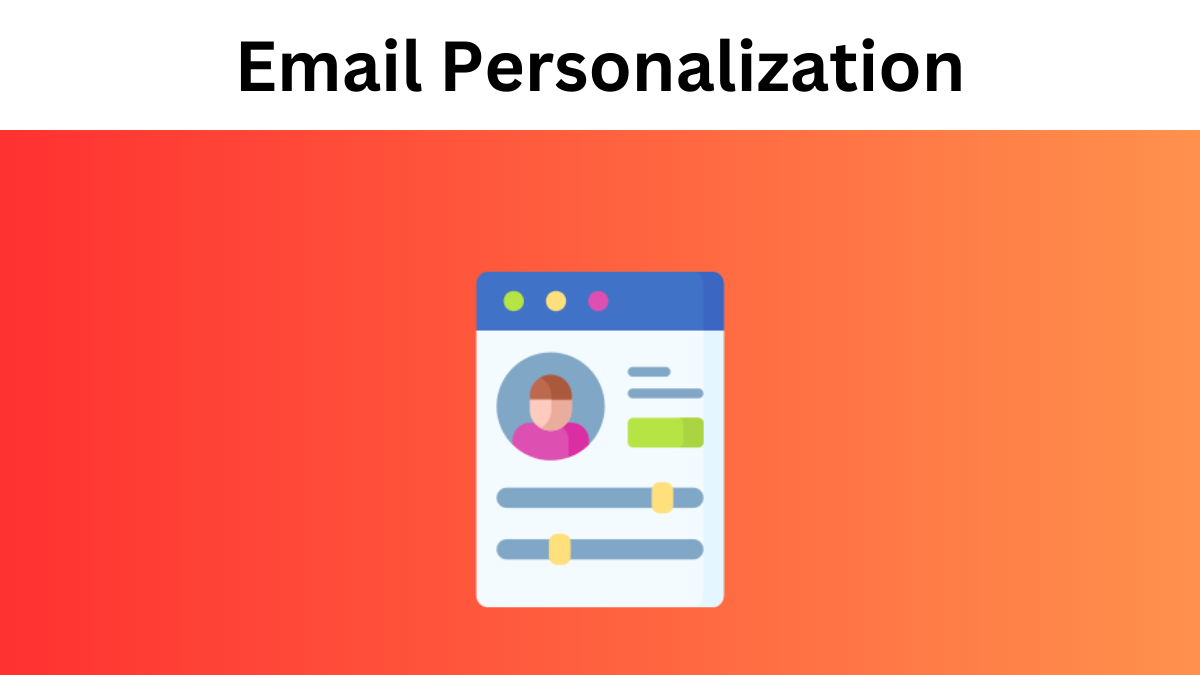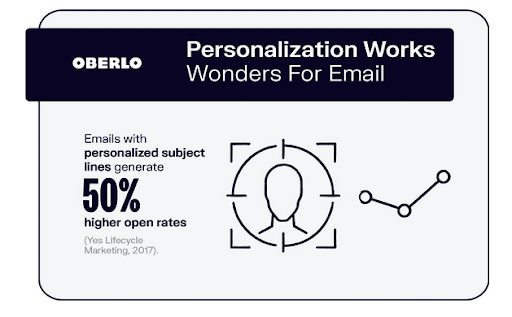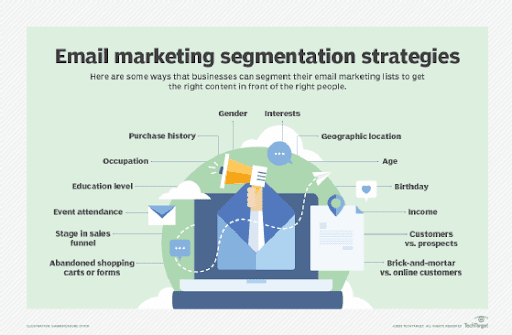Email marketing is hard enough – from getting subscribers to open your emails to having them click through the link embedded or to take an action. Now imagine if your emails still lack personalization, you’re less likely to see any boost in your metrics.
Email personalization adds that missing human touch and emotion to your copies, making each subscriber feel as though you’re communicating with only them.
In this article, I will explain what email personalization means and how to use it to scale your marketing campaigns.
What Is Email Personalization?
Email personalization is a marketing approach that entails tailoring your email communications based on your recipient’s characteristics, behaviors, or interests. This can range from using your recipient’s name in the email to delivering content that is specially designed to meet their individual preferences or needs.
Note that email personalization is more than just addressing your recipients by their name; it involves a range of techniques that aim to provide a personalized user experience.
Here are some levels of email personalization you should know:
Basic Personalization
In 2025, around 47 percent of marketing professionals from selected countries worldwide sent out more than half of their e-mail marketing campaigns with subject line personalization included. This is the simplest form of email personalization where you include the recipient’s name in the email, typically in the subject line or the greeting. This level also encompasses using other basic information, such as their location or the company they work for.
Segmentation-Based Personalization
Segmentation-based personalisation, as opposed to simple personalization, entails segmenting your email list based on specific factors such as demographics, historical purchases, or engagement behavior. Each section receives material that is suited to them, resulting in a more personalized experience than a one-size-fits-all approach.
Behavioral Personalization
Behavioral personalization uses data on the actions and behaviors of your users. This could include their browsing history, previous purchases, clicked links in your emails, and more. You can then tailor the email content to their behavior, showing them products or services they might be interested in.
Predictive Personalization
Predictive personalization level uses machine learning algorithms and AI to analyze past behavior and predict future actions. You could, for example, anticipate which things a user is likely to purchase next and send them a customized email with product recommendations.
Also Read: How to create an email signature?
Importance Of Email Personalization
Based on the results of a survey conducted among marketers in late 2019, it was found that 43 percent of respondents indicated personalization as the most important characteristic that needs to be improved in order to effectively optimize their e-mail marketing campaign.
Between a generic email that sounds robotic and a personalized one that addresses you one-on-one, I will go for the latter.
And here’s why:
Increased Open Rates
Personalized emails capture recipients’ attention faster and, as a result, are more likely to be opened. Once your subscribers see their name even before opening the email, that’s enough to invoke their curiosity and step further.
Higher CTR
Personalizing your email content increases your chances of getting more clickthrough. This can in turn lead to more visitors on your website and concurrent sales if you know your craft well.
Enhanced Customer Experience
Customer experience is one of the top metrics for every business – small or large. The cost of acquiring new customers is way too much. So if you can do anything to retain the ones you already have, that will be through email personalization.
Boosted Conversion Rates
By sending personalized product recommendations and offers, you can increase the chances of a recipient making a purchase, thereby boosting your conversion rates.
Strengthened Customer Loyalty
Email personalization helps make your customers feel valued and understood. This can help build stronger relationships with your customers and increase their loyalty to your brand.
Reduced Unsubscription Rate
If your emails are consistently relevant and interesting, people are less likely to unsubscribe from your mailing list. On the contrary, generic, non-personalized emails are often seen as spam and can lead to high unsubscribe rates.
Efficient Use of Resources
Personalized emails can help ensure that your marketing efforts are targeted towards the right audience, which can help you achieve better results without necessarily increasing your marketing budget.
Also Read: How to use SMTP mail server to send Best Emails in WordPress
Techniques & Best Practices For Implementing Email Personalization
To successfully implement email personalization and maximize its benefits, you need to:
Collect & Analyze User Data
Your first step should be gathering information about your subscribers. This can include demographic information like age, gender, and location, behavioral data like browsing history or past purchases, and explicit preferences that the user has shared.
This data can be collected through signup forms, surveys, and tracking user activity. It’s critical to respect privacy laws and regulations while collecting this data, ensuring that the user gives their consent.
Segment Your Email List
Once you have sufficient data, you can segment your email list based on different criteria. Segments could be based on demographics, user behavior, purchasing history, or even user engagement with past emails.
By segmenting your list, you can ensure that each subscriber receives content that is most relevant to them, thereby increasing the chances of engagement.
Use Reliable Email Personalization Tools
Email personalization tools have many features like email signature generator, personalized email templates, email segmentation, etc. which can save you from the stress of manually building personalization templates or creating a new insignia representing the authenticity of your email. So, find one that fits in your budget and needs.
Personalize Email Subject Lines And Content
It;s a common practice to use your recipient’s name in the subject line and email title but that’s not everything about personalization. You can use the data you collected to segment your email list and ensure each category only gets the type of email they signed up for instead of using a generalistic campaign approach. This ensures each of your lists get the exact content they signed up for – not value today, trash tomorrow.
Balance Personalization and Privacy
Personalization can improve the experience of your email subscribers but that comes at the cost of using their personal data. It’s best you keep away from data you’re not permitted to access or ensure your subscribers know how you plan to handle their data.
Regular Testing and Optimization
Just like any marketing strategy, you should regularly test your personalized emails and optimize them based on the results. This could involve A/B testing different types of personalization to see which works best.
Maintain Data Hygiene
Ensure your customer data is up to date and accurate. Regularly clean your email list to remove inactive users or incorrect email addresses.
By implementing these techniques and best practices, you can effectively leverage the power of email personalization to engage your audience, boost conversions, and enhance customer loyalty.
Also Read: Ways To Boost Sales For Your Freelance Business
Conclusion
Email personalization, a valuable email marketing technique, involves tailoring communications to a recipient’s unique interests and behaviors. This strategy leads to improved engagement rates, enhanced customer loyalty, and increased conversions.
To implement it effectively, it’s essential to gather user data, segment your audience, personalize content, and use dynamic elements. Alongside these, maintaining privacy, regular optimization, using reliable tools, and ensuring data cleanliness are crucial. When done right, email personalization can significantly boost customer experience and revenue, making it a cornerstone of effective email marketing.



